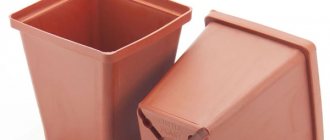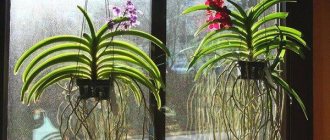Violets are considered one of the most common indoor flowers. The colors come in different colors, but two-color options are especially popular among gardeners. One of them is the Sunny Boy violet, which was bred by the famous Russian breeder Elena Vasilievna Korshunova.
Its flowers are known all over the world and are in great demand. Their diversity is simply amazing. A big plus is their rapid flowering, which can last most of the year.
Description of violet Sunny boy with photos
Violet Sunny Boy - these are flowers with large lemon-white petals, bordered by a blue fringe, with a yellow center and a blue eye. The outlet itself is small. The predominant color is lemon. The shape of the flower resembles a pompom and the size is 6 cm.
The flowers are located so close to each other that together they form a fluffy ball consisting of buds and peduncles, on which there are 5-6 flowers. If the flower is placed in a place with high temperature, blue marks may appear.
The leaves of the plant are green and wavy. It often happens that violet blooms without any yellow color at all, but with age it begins to appear more and more. Often it is the description and photo of a flower that pushes flower growers to grow it.
The main thing is to make sure that there is not a lot of blue, otherwise the violet will go to waste. The typical violet coloring begins to appear after 2-3 blooms. As practice shows, if a plant initially blooms with a pure color, it is not in danger of being darkened by blue.
The Sunny Boy variety is characterized by a rather long blooming of flowers, and this happens alternately. A distinctive feature of this variety of violets is that it begins to bloom quite early - at 10 months
General information
Characteristics and photos of violets
The rosette of the variety is not very proportional; the leaves grow randomly. No more than 10 months pass before the Sunny Boy violet first blooms from planting. The size of the first bud can be about 6 cm, the next flowers are slightly smaller.
Violet flowers are white with a lemon tint and bluish fringe. Yellow color is the dominant color of the variety. If the room is too warm, the flowers may have small blue dots.
The flower is voluminous and terry, somewhat similar to a pompom. The older the rosette, the greater the appearance of yellow color; in a young plant, the flowers can be pure white. When a large number of flowers bloom on the Sunny Boy violet, they form one dense ball on high peduncles. Each of them can have 5 flowers, they all bloom in turn, so the flowering period is prolonged.
With the appearance of blue dots on the flowers, it can turn completely blue and go into sports.
Sports are a very common occurrence in this variety. Of all the grown children, only one out of four can receive varietal affiliation. Sport differs from varietal violets in the foliage on which spots appear, and the flowering also differs. The flowers are blue-white, blue, and blue with dark stripes.
Attention! If after planting flowers appear with the colors of the mother bush, it is unlikely that this plant will go into sport. There are times when the third flowering period may turn blue.
How to care for flowers
Like all other varieties of violets, Sunny Boy is not too whimsical, but certain rules must be followed in its cultivation. This is especially important for those who want to get a beautiful and original violet.
It should be borne in mind that this flower loves a lot of light, but this does not mean that the plant should be placed in direct sunlight. Sufficient humidity is very important for violets. However, the plant will not tolerate stagnation of water in the soil, which will certainly affect its color and can cause the development of diseases.
Sunny Boy does not tolerate spraying, so such a procedure should be excluded. Water the plant exclusively with warm and settled water. For the violet root system, watering through a tray is considered especially useful.
Important. The sunny boy needs to be protected from drafts. The violet also tolerates overheating and dry air very hard, so you should not place the pot next to a heater, radiator or fan.
Periodically, you can add fertilizer to the soil and replant the bush, if necessary. With proper care for the Sunny Boy, within a year he will begin to delight his caring owner with the most beautiful flowers.
Violet Sunny Boy is sensitive to watering regime.
It should be borne in mind that the flowering of the rosette can last up to 2 months, after which the plant takes a short break. All faded flowers should be removed in time to give the violet strength to develop new ones.
In order for Sunny Boy to please with beautiful pedigree flowers and not produce rosettes of the wrong shades, you need to follow the main rule in care. It concerns watering. If the plant is over-watered, it will not only bloom poorly, but may also become diseased.
Violets are susceptible to some dangerous ailments and are afraid of parasites, so preventive measures regarding such flowers will not be superfluous.
Reproduction by leaf fragment
Reproduction by leaf. Take an adult, but not yet old leaf, and cut it into several parts. The top of the leaf is trimmed to prevent leaf growth, otherwise the formation of daughter plants will take a long time. The central vein is completely removed with a sharp knife or scissors - two fragments come out, which can be divided into two more (depending on the size of the leaf, more are possible). The main and lateral veins of the leaf are a continuation of the petiole, which is why the veins are necessary for rooting to be successful. Open sections of the lateral veins subsequently serve as the petiole.
In light soil, make a groove and place a fragment of the leaf into it to a depth of about half a centimeter with the side that was attached to the central vein. After 2 months, babies will begin to appear: the more veins the leaf has, the more babies you will get. They are planted after 3-4 months; you should not touch them before.
If you root a leaf with a petiole, then often only one child will grow from such a leaf. It is better to propagate the plant from a leaf fragment.
When left without a cap, the leaves lose turgor; a greenhouse is required (which must be periodically ventilated).
It is convenient to propagate the plant in peat tablets, but you need to be careful not to over-moisten the substrate.
Feeding and replanting violets Sunny boy
To obtain high-quality and lush color of the Sunny Boy, it is recommended to apply fertilizers. This procedure should not be performed too often. Those gardeners who abuse fertilizing can simply destroy a beautiful flower.
It is important to consider that the soil for violets must be correct. It is best to take special substrates that are sold in flower shops. They contain components in optimal proportions. But if you wish, you can make the soil mixture yourself.
For this, peat, sphagnum moss, leaf soil, sand and charcoal are taken. It should be borne in mind that all these components must be properly processed so as not to introduce pests or diseases. The substrate for the Sunny Boy should contain at least 30% moss and coal. The least amount of sand is added.
For better plant growth, experts recommend adding perlite to the soil. It will better retain moisture in lightweight soil. Regardless of the composition of the soil for violets, humate must be added to it once a year.
In order for the Sunny Boy violet to bloom profusely and luxuriantly, it is periodically fed with fertilizers.
In autumn and spring, mineral fertilizers are also used. For the sunny boy, as for other varieties of Saintpaulia, liquid mineral fertilizers are suitable.
There are a lot of nuances to follow when growing violets. It is advisable to pay special attention to the earthen coma. It must be sufficient for the roots to develop normally. However, in a very large pot the flower will not feel well, so such planting is unacceptable.
In any case, someday it will come to a transplant.
In this case, the following features must be taken into account:
- You should prepare the right pot and be sure to stock up on a sufficient amount of fresh substrate. It is believed that for an adult violet a pot 10-12 cm high is sufficient. And a third of this volume should consist of drainage filler. This is important for proper violet flowering. Until the root system fills the entire space with soil, you should not expect flowers.
- When planting, be sure to pay attention to the drainage hole. It should be large enough so that water does not linger in the soil. Otherwise, the violet will hurt.
- During transplantation, you should inspect the roots of the violet.
When replanting, you need to pay attention to what kind of roots the plant will have. In a healthy Sunny boy they are light and completely fill the space of the pot. If you remove the plant, the root system will retain its shape. Diseased roots will be immediately visible by color and appearance. When transplanting, they must be removed.
- For the Sunny Boy violet, the correct temperature is very important. Particular attention should be paid to the temperature regime during the first weeks after transplantation. For summer, the best option would be 25 degrees, and for winter, 20 is enough. Air humidity for good flowering should be 50%.
How does a flower reproduce?
Like many other violets, Sunny Boy reproduces in several ways:
- leaves (this is the most convenient way);
- the plant takes root well with cuttings and flower stalks;
- from seeds (the most difficult method).
The most popular propagation of violets is by rooting leaves. To do this, it is enough to take one leaf from the parent bush, cut at an angle. It is immersed in water for a while until small roots appear.
As a rule, this happens within a couple of weeks. When the root reaches a size of 5 mm, you can plant the violet in a pot. It is advisable to cover the plant with film until the first young leaves appear. With proper care, you can expect the first flowers within a year.
Growing and care
Placing Pots with Sunny Boy
In summer, violets will grow best on a northern or western windowsill. In winter, the south side is suitable for it, if there is insulation. If the windows and window sill are old, then it can be placed near the window, in addition to placing lighting fixtures. If the windowsill is cold, the pots can be placed on a wooden board, which will prevent the roots from freezing.
Attention! If the Sunny Boy violet gets cold, especially the root system, it will stop blooming.
Maintaining Humidity Levels
In conditions of natural growth, violets are more accustomed to humid air; a level of 50% must be maintained at home. To create humidity, the pot can be placed on a tray with pebbles or expanded clay watered with water, but on condition that the bowl itself does not touch the water.
During the heating season, you can resort to using a humidifier and wet towels placed on radiators.
Lighting for EK Sunny boy
The external condition of the plant improves if the light is diffused. Direct exposure to sunlight or close proximity of incandescent lamps can deteriorate the decorative appearance of violets. 10 hour illumination can be provided only with the help of special lamps.
Important! The leaves of any type of violet stretch towards the light, so they need to be turned in the other direction from time to time, so the rosette will be more symmetrical .
There is no need to illuminate the violet for more than 14 hours; it also needs dark time, otherwise the flowering period will shift and the leaves will not be so juicy.
Feeding the Sunny Boy
Indoor violets do not like very frequent fertilizers. This will ensure beautiful and dense flowering. If you buy soil for growing in a store, you do not need to feed the plant at first.
You can fertilize the Sunny Boy violet for the first time after flowering. It is better to use liquid complex fertilizers, but their concentration should be half that specified in the instructions. In the future, fertilization can be carried out in spring and autumn.
How to water a violet correctly
When watering a flower, the main thing is not to overdo it; wet soil can lead to the death of the plant. Most often, EK Sunny Boy is watered using the bottom method. To do this, fill the tray in which the pot is placed with water, and the soil can absorb moisture until the surface begins to shine.
If you water a plant from the top, you need to do it so that water does not get on its parts. It is best to use a watering can with a thin spout.
Interesting! One variety of violet can bloom differently depending on the conditions in which it is found. The intensity of the lemon shade can also change depending on the ambient temperature.
How to replant a violet
The size of the pot for EK Sunny Boy should be equal to 3 parts of the rosette. When the plants reach adult size, the volume of the pot can no longer be changed, but only renew the soil completely or partially.
What factors indicate the need for a transplant:
- the plant has stopped growing;
- the surface of the soil has acquired a whitish coating;
- the Sunny Boy violet has a trunk due to the removal of old leaves;
- the root system became cramped in a small pot.
Planting and replanting violets is best done in the spring, before the variety begins to bloom. A young plant that still needs an enlarged pot can be replanted with a ball of earth, adding new soil into the voids.
If there is a need to completely replace the soil, the roots must be cleaned very carefully, and do not try to remove absolutely all the soil if this does not work. It is enough to remove at least 70% of the total amount of soil.
Violet propagation
Sunny boy reproduces in the same way as other varieties of Saintpaulia.
to propagate violets using leaves , but there is a possibility of changes in varietal characteristics. The cut leaf is shortened slightly and dipped in water to form roots, usually this happens in the first 14 days. After this, the leaf can be rooted in a small pot until sprouts appear; it is covered with film or glass. With this method of propagation, the violet will bloom in the first year.
Stepchildren that form on the mother bush also take root well, but some of them acquire sports properties. You can root them immediately in the ground, or you can put them in water and wait for the roots.
Violet blossom Sunny boy
If you pay attention to the description of the variety, the main feature of the Sunny Boy is its unusual color. The flower is distinguished by a lemon center and bluish edging around the edges. At the same time, in order to preserve the plant’s original color, it is necessary to properly care for the violet.
Violet Sunny Boy may change color if the room is too hot.
Sunny boy does not tolerate high humidity and abnormal temperatures very well. This applies to all multi-colored violets, which may change color over time. Most often, darkening of the petals occurs.
As for Sunny Boy, his main problem is blueness. It forms not only due to improper watering, but also simply over time. Therefore, old flowers must be renewed.
This variety can produce different shades of rosette, depending on where the pot is located. There may be one color on the rack, and another on the windowsill. Moreover, the quality of the flower may vary from year to year.
Interesting. The aroma of Sunny Boy is quite typical for terry violets. And the main distinguishing feature of this variety is its rosettes. The flowers appear gradually on them, so the flowering is long, but not too violent. As a rule, 6 lush flowers are formed on one peduncle.
Sunny Boy is considered the variety that blooms quite early. Sometimes the first flowers bloom as early as 10 months. At first, a lot of sports may appear in the rosette, that is, flowers with the wrong color, most often with an excessive amount of blue. But over time, the breed characteristics begin to actively manifest themselves, so soon the florist can admire all the beauty of the Sunny Boy.
What diseases is Sunny Boy susceptible to?
Like many other violets, Sunny Boy is susceptible to certain pest diseases. Therefore, preventive spraying should be mandatory. If a plant shows signs of illness, it should be immediately quarantined so that it does not infect other representatives of the flora.
Violet Sunny boy can get fusarium and other fungal diseases.
The Sunny Boy variety may be affected by:
- late blight;
- fusarium;
- powdery mildew;
- downy mildew;
- spotting on leaves;
- gray or root rot;
- vascular bacteriosis.
You can determine that the violet has begun to hurt based on several signs. Most often, the symptoms are reflected on the leaves, but sometimes the root system is the first to suffer, as occurs with root rot.
Various types of mites can appear on violets. In this case, the plant must be urgently treated with an acaricide. Flying parasites called thrips, which actively eat foliage, can also become a problem. Nematodes may be waiting in the soil. Among the pests that can affect violets, it is worth noting aphids, woodlice, scale insects and springtails.











